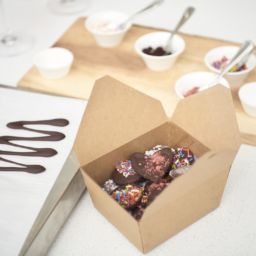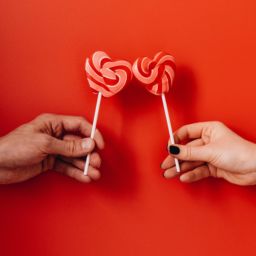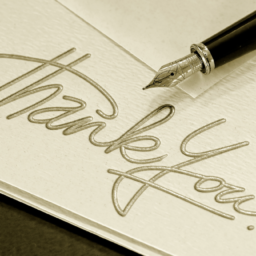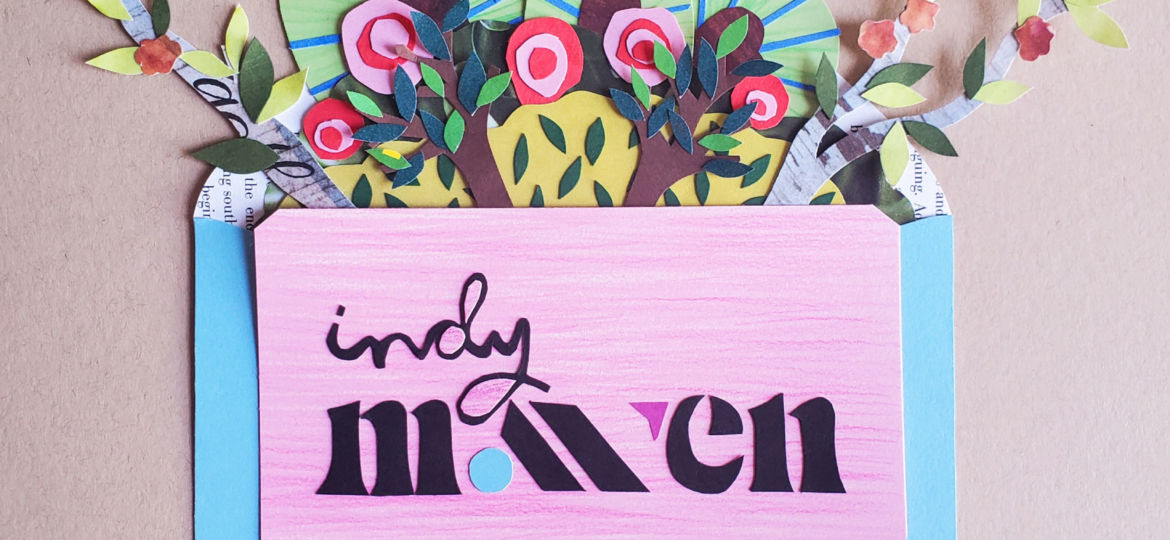
If you haven’t seen Shelley Hanmo Qian’s delightful paper artwork yet—you’re in for a treat. A classically trained pianist, Shelley was born and raised in China and moved to the United States at age 18 to continue her musical studies.
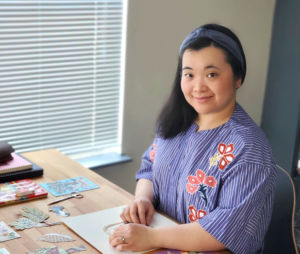
Shelley graduated from Indiana University with a doctorate in music and a master’s degree in arts administration, then worked as an award-winning concert pianist, music educator, and arts coordinator. Paper art and illustration became her creative outlet, and in 2019, Shelley decided to pursue her passion by launching her art studio Junonia Arts.
Shelley currently resides in Indianapolis, and her artwork features mostly repurposed paper materials like magazine pages, shopping bags, catalogs, and wrapping paper. She offers a variety of greeting cards and custom portraits on her Etsy site, and is also the illustrator of a children’s book titled “In the Quiet Beauty of the World.”
We caught up with Shelley to learn more about Junonia Arts and her fabulous paper skills.
You moved from China to the United States at age 18—what drove you to make the move?
When I was younger, all I knew was that I wanted to do something creative and artistic with my career. So, I came to the U.S. when I was 18 to study music. Music opened the door for me at the time by allowing me to travel around the world to pursue my dreams.
After working as a concert pianist and music educator, what made you decide to take the leap and pursue your passion for paper artistry?
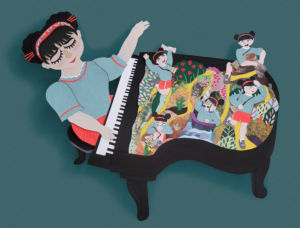
My enthusiasm for art started at a young age after taking watercolor art classes for a few years. Over the years, I would visit art museums whenever I traveled to a new city. I also developed a hobby of creating handmade greeting cards from old magazines and shopping bags for my friends and family.
The decision to pursue my passion with paper artistry began around the end of 2019 and the beginning of 2020. After graduating from IU Jacobs School of Music, I felt a bit lost in terms of what I should do next. The timeframe also coincided with the beginning of the pandemic when everything was shut down. During that time, I had serious self-reflection and brainstorming sessions with my family regarding what I should do during the lockdown, and making art was the one thought that kept recurring to me.
In the following few months, I began to share my paper collage art on various social media platforms. Creating art quickly grew from a hobby to a small business. In the spring of 2020, I launched my art studio “Junonia Arts” and opened my Etsy shop. Since then, my art journey has been amazing. I’ve had opportunities to work with writers, artists, organizations, companies, and editors on various projects: book illustrations, editorial designs, social media posts, puzzle designs, greeting cards, and more. Looking back on my determination to pursue freelance illustration, I believe my decision was the right step.
Can you explain how you came up with the name “Junonia Arts” for your company?
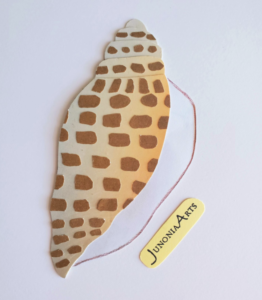
My art studio name “Junonia Arts” took inspiration from the junonia, a rare type of seashell native to Florida. Besides its obvious connection to my name “Shelley,” a junonia shell offers unique beauty that is unlike any other seashell. It has an elegant shape with a spotted pattern all over its body.
Junonia Arts is also a symbol dedicated to my husband, who is from Florida. After all, Junonia Arts is an artistic journey that I took on because of his constant encouragement and support.
Where and how do you find inspiration for your work?
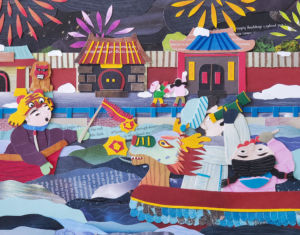
My two major sources of inspiration for my artwork are nature and cultural stories. My color palette derives from colors found in forests, oceans, meadows, lakes, deserts, etcetera. A trip to the outdoors often gives me new design ideas. I enjoy “studying” nature by carefully observing how animals move and interact with each other, and how shapes and textures interweave into landscape scenes. Lighting also affects how the world is viewed.
Another major inspiration for my work is cultural stories. Since a young age, I have enjoyed reading folklores, fairytales, and historical stories from Asia and other parts of the world. As someone with a multi-cultural background, I would like my art to reflect my cultural heritage as well as to carry stories that will resonate with others.
How do you source the papers and materials for your artwork?
I enjoy experimenting with different paper colors and textures. Frequently, I source my collage elements from magazines and other repurposed paper materials. Searching for the right paper is like a “treasure hunt” at times.
In my paper art, texts on the repurposed paper often cultivate depth and textures. Words on the paper are sometimes highlighted in the design to convey hidden meanings behind the artwork. By using repurposed paper for my artworks, I hope to promote the awareness of reusing and upcycling while bringing joy to many others through storytelling illustrations.
Can you walk us through the process of making one of your creations? How do you generally do it, and how much time does it take?
My artistic process consists of several steps. The first step is to design and create a story scene and the characters in the scene. This step takes the longest to finish. It usually starts with sketching out the design elements in a sketchbook, choosing the right paper for the designs, then adding textures, shades, and colors with color pencils, and finally cutting out and gluing the collage designs.
Once the background scene and the characters are completed, photographing the finished art is the next major step. I often take photographs of the artworks in different angles, sizes, and styles. Lighting and background are two very important factors to consider when it comes to photographing art. I prefer to take photographs under natural light to best bring out the depth and the vibrant color of the collage works.
Some post-production digital editing is also needed to enhance the image. My favorite software to use is Adobe Photoshop, Lightroom, Camera Raw, and Illustrator. In general, the entire process of creating a full-background collage artwork takes about a week or so to complete. Some may take longer depending on the complexity of the design.
You also sometimes turn your artwork into STOP MOTION GIFS (like this amazing GIF that you created for Indy Maven)—how do you do that?
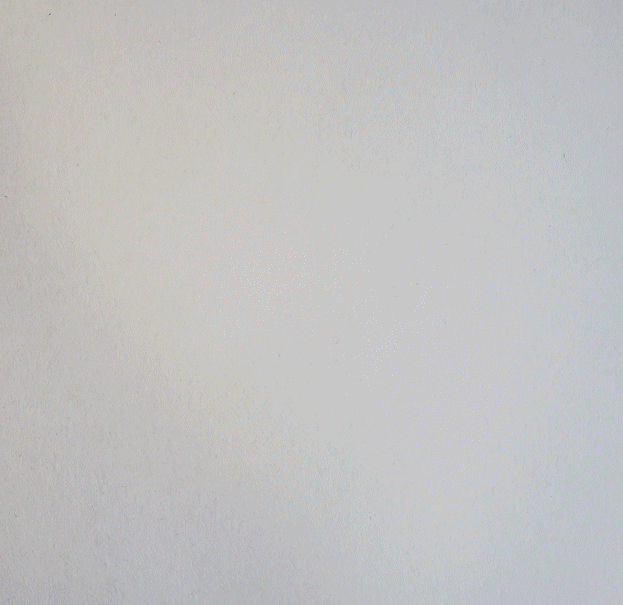 Creating stop motion graphics is one of my interests in paper art because I am fascinated by the colorful and whimsical nature of the technique. To create a GIF design, I first need to develop components that can move in the animation.
Creating stop motion graphics is one of my interests in paper art because I am fascinated by the colorful and whimsical nature of the technique. To create a GIF design, I first need to develop components that can move in the animation.
Once movable parts in the paper art are created, I take a series of photographs of each movement and arrange them as frames in the animation. The last and the most essential step in the stop motion GIF creative process is digital editing. Right now, I am still exploring new techniques to improve my animations, and I hope to create more GIFs in the future that will elevate my storytelling art.
What are your hopes for Junonia Arts in the future?
As a self-taught artist, I strive to acquire new methods and techniques that can enhance my illustration style. I would love to explore different opportunities in children’s book illustration, editorial designs, and product designs. My hope is that Junonia Arts will continue to grow and bring joy to others through colorful paper art.
Stephanie Groves is the Executive Editor of Indy Maven and is in awe of Shelley’s talent.
All of our content—including this article—is completely free. However, we’d love it if you would please consider supporting our journalism with an Indy Maven membership.







